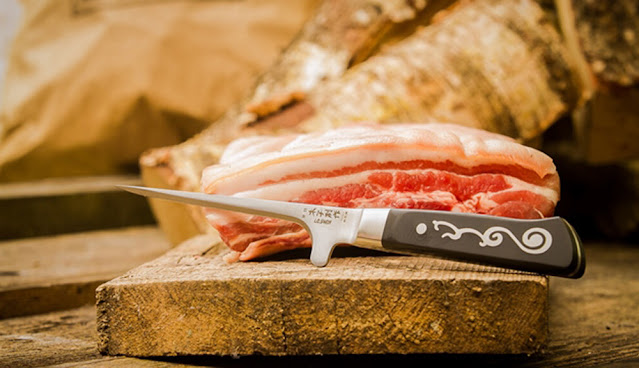The Unsung Hero of the Kitchen: Exploring the Versatile Boning Knife
In the world of culinary tools, the boning knife may not get as much attention as its more famous counterparts, but it plays a crucial role in the hands of skilled chefs and home cooks alike. This blog explores the unsung hero of the kitchen – the boning knife – and sheds light on its unique features and versatile applications.
What is a Boning Knife?
A boning knife is a specialized kitchen tool designed for one primary purpose: removing bones from meat, poultry, and fish. It is characterized by its narrow, sharp blade and a pointed tip. This design allows for precise and controlled cuts, making it an indispensable tool for anyone working with raw meat.
Anatomy of a Boning Knife:
The key elements of a boning knife include:
Blade: Typically 5 to 7 inches long, the blade is narrow and sharp to facilitate precise cutting.
Flexibility: Some boning knives have flexible blades, which are excellent for working around joints and bones, while others have stiff blades for more controlled cutting.
Pointed Tip: The pointed tip helps in getting into tight spaces and making intricate cuts.
Handle: Ergonomically designed handles ensure a comfortable grip during use.
Types of Boning Knives:
There are two primary types of boning knives:
Flexible Boning Knife: Ideal for removing bones from poultry, fish, and more delicate cuts of meat.
Stiff Boning Knife: Best for removing bones from larger cuts of meat, such as beef or pork.
Versatility in the Kitchen:
While the boning knife's name suggests a specific purpose, it's incredibly versatile. Here are some common uses:
Filleting Fish: The pointed, narrow blade is perfect for delicately separating the flesh from the bones of fish.
Deboning Poultry: Easily remove bones from chicken, turkey, and other poultry for a more enjoyable dining experience.
Trimming Meat: Trim fat and connective tissues from cuts of meat, ensuring a clean and professional presentation.
Preparing Cuts: Create precise cuts for dishes like Beef Wellington or stuffed pork chops.
Fruit and Vegetable Work: The boning knife can also be used for peeling and trimming fruits and vegetables.
Care and Maintenance:
To keep your boning knife in top condition, follow these tips:
Hand wash and dry the knife promptly after use.
Regularly sharpen the blade to maintain its sharpness.
Store the knife in a knife block or magnetic strip to protect the blade and prevent accidents.
Conclusion:
The boning knife may not be as famous as the chef's knife or the paring knife, but it's an essential tool in the kitchen, especially for those who frequently work with meat and fish. Its precision and versatility make it indispensable for any cook or chef looking to elevate their culinary skills. Whether you're a professional or a home cook, consider adding a boning knife to your kitchen arsenal, and you'll discover a world of new culinary possibilities.



Comments
Post a Comment